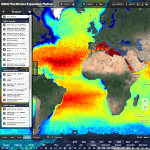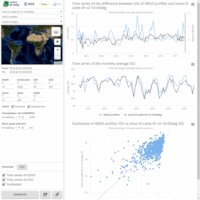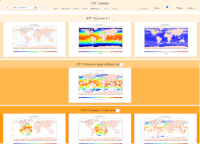Roaring forties / Furious fifties
Retrieving SSS from L-band radiometers in the Antarctic regions is especially challenging because (i) of significantly lower sensitivity of changes in brightness temperature to changes in SSS at relatively low sea surface temperature (SST), (ii) of the influence of the strong winds of the high-latitude Southern Hemisphere on the brightness and (iii) the potential contamination of the radiometer data by sea ice. Despite the potential inaccuracies of satellites and differences within the satellite salinity products, the increased temporal and spatial scales and measuring the top few centimeters of the ocean surface have made satellite-derived salinity a useful quantity for air–sea interaction studies.





